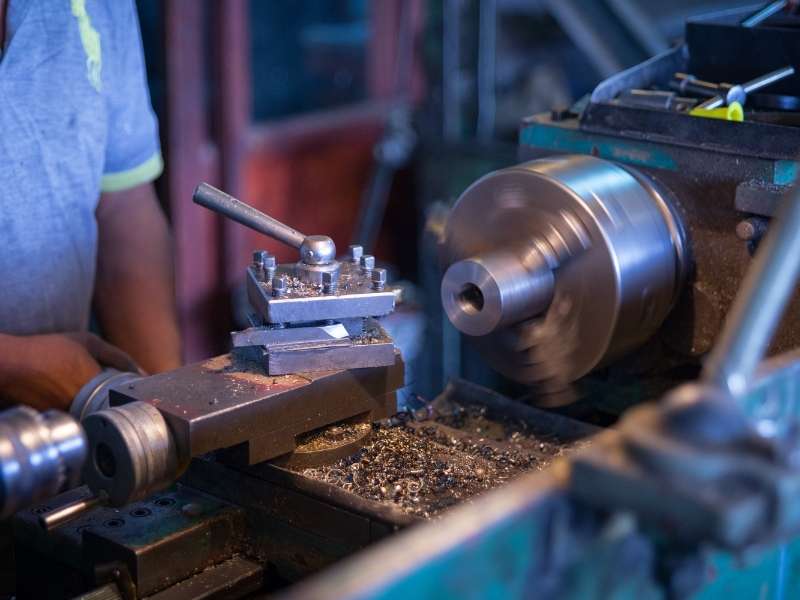CNC machining is a subtractive manufacturing process. Control computerization and automation of machine tools are what aid the operator in removing chunks of material from a workpiece. CNC machining is also applicable to various materials, including wood, glass, metals, foam plastics, and composites. If this interests you, continue reading to get your essential guide to CNC Machining.
Your Essential Guide to CNC Machining

Process Overview
The machining process involves the following steps.
- Designing the CAD model. In this step, the 3D design is created and uploaded.
- Exporting the CAD file into CAM software and converting it into a CNC program.
- CNC machine preparation and setup. Before initiating the CNC program, the machine and the workpiece need the required setup.
- Execution of the machining operation.
The CNC program gives instructions to the CNC machine while it operates under these instructions. Then, on activation of the CNC system, it provides the dimensional tasks as per the specifications of the CNC program.
The Operations
• CNC Drilling
This CNC machining process uses multipoint drill bits to create cylindrical holes in the workpiece. The CNC machine inserts the rotating drill at a perpendicular angle on the surface of the workpiece.
• CNC Milling
This machining process uses multipoint rotational cutting tools to eliminate material from the workpiece. Of course, this process makes a broader range of shapes such as cutting deep cavities, cutting flat surfaces into the workpiece, and peripheral milling. Moreover, CNC milling, the workpiece, and the cutting tool are fed in the same direction. There are many different types of CNC milling machines available, each with its own unique capabilities.
Milling operations include the following:
- Chamfer Milling
- Face Milling
- End Milling
- Drilling, boring, and tapping
• CNC Turning
CNC turning process uses single-point cutting tools to eliminate material from a rotating workpiece. Additionally, CNC turning involves a CNC lathe machine.
The Mechanism
• The G-code program
Numerical control operates CNC machines with the machine using a language called G-code. Interestingly, the G-code controls various movements of the CNC machine, including rate, coordination, feed, etc.
• Open or closed loop
The Open-loop employs a one-direction signaling system between the controller and the motor. However, in a closed-loop system, the controller can receive feedback and can correct any error. Then, in CNC, machining movements across the x and y-axis are possible.
Steppers for servo motors guide the tool. These motors also function under the command of the G-code.
You can also use simple process requiring minimal speed and force open-loop control. However, for more stringent requirements, we recommend a closed-loop system for accurate output.
• Fully Automated
A workpiece may require a variety of machine tools, e.g., drills, cutters, etc. To accommodate these requirements, the new generation machines combine a variety of functions into a single cell. With automation, the CNC process allows precise output for difficult and complicated projects.
Types of CNC Machining
• 3-Axis CNC Machining
With 3 Axis CNC machining, 3-directional simultaneous movement on the X, Y, and Z-axis is possible. It can be used to produce high precision and accurate end products.
• 4-Axis CNC Machining
With 4 Axis CNC machining, 3-direction movement is enabled, and an additional rotation is also allowed.
• 5 Axis CNC Machining
With a 5 Axis CNC machining, 3-directional movements are enabled, and additional two directions of rotations are also allowed.
Materials Used
A variety of materials can be used for CNC prototypes and manufacturing parts.
- Hard metals- Titanium, Stainless steel
- Soft metals- Brass, Copper, Aluminium
- Plastics- ABS, Bakelite, PA, PC, PVC, etc.
Surface Finishing Available
• Anodizing
Anodizing provides resistance to corrosion. It protects the metal surface by improving wear, resistance, and hardness. Anodizing is preferred for designing parts of precision instruments, automobiles, and aircraft.
• Bead Blasting
Beat blasting can be utilized for designing a matte texture on a smooth surface.
• Powder Coating
Powder coating imparts durability, wear resistance, and corrosion resistance. Plus, powder coating is compatible with any metal surface. You can also use it for applying color to machine parts.
• Electroplating
Electroplating can be utilized for corrosion resistance, functionality, or only for aesthetic purposes. The automotive sector uses this surface finish for chrome-plating of steel automobile parts.
• Polishing
Polishing involves physical rubbing of a part or chemical interference to create a smooth and shiny surface.
• Brushing
Brushing gives an aesthetic look to the metal surface. The treatment process additionally involves abrasive belts to design traces on the metal surface.
• Painting
Painting enhances the aesthetic appearance and gives protection to the surface.
Advantages of CNC Machining
• Rapid Prototyping
CNC machining compatible with a varied range of cost-effective materials. Amazingly, with CNC machining, the design of precise parts and prototypes has a rapid turn-around time.
• Reduces Labor Requirement
CNC Machining is a highly sophisticated and automated process. Therefore, with such levels of automation, the requirement for manual labor reduces.
• Precise and Automated End Product
With complete automation, the scope of error decreases. Complex procedures also use a closed-loop system to ensure accuracy.
• Professional CNC Machining
Professional CNC Machining services are available for Precision CNC machined prototypes and production parts.
• Professional CNC Machining Process
- Upload the CAD design
- Get CNC quote
- Order placement
- Get the product delivered
• Advantages of Professional CNC Machining
- Customized solutions
- Budget-Friendly options available
- Availability of skilled engineers and expert consultation
- Rapid turn-around time
- Quality assurance
CNC Machining has a high-demand in the manufacturing sector. It is also a reliable process to produce accurate and precise product parts. But, operating a CNC Machinery without adequate knowledge is tricky. It also requires the right programming to get the desired result. Also, repairing any damage to the machine is expensive. Therefore, it is important to use this guide to CNC machining to your benefit.
Therefore, approaching a company with relevant expertise is the best choice to get top-notch quality assurance. So, we recommend that you get in touch with a professional CNC machining service today to start your project.
We hope this essential guide to CNC machining is helpful to you. Also below are several links for your convenience to take you to more interesting articles about ALL things DESIGN for your home or business.
Images Courtesy of Canva.
Other Posts You Might Enjoy:
Top Reasons for a Home Plumbing Inspection
Trouble Ahead: 6 Signs It’s Time to Replace Your Sewer System





